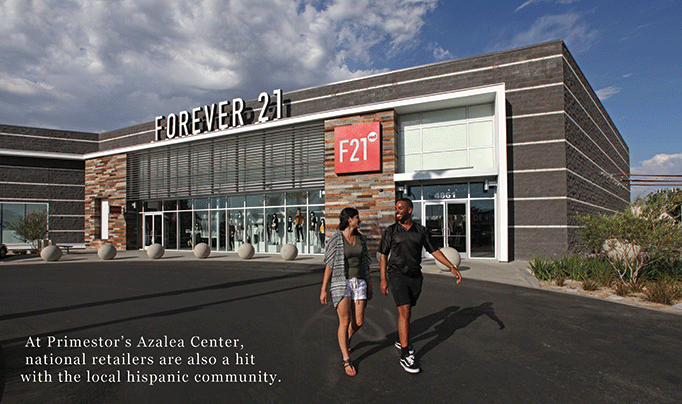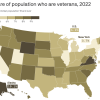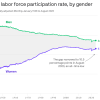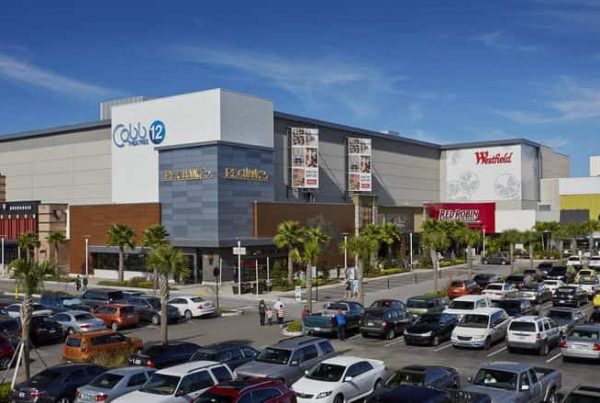By Joel Groover
Hispanic incomes are soaring, leading more developers and retailers to target the burgeoning ethnic group.

Arturo Sneider, co-founding partner and CEO of Los Angeles–based Primestor Development, recalls a time when shopping centers that focused on Latinos were at square one. “Our business started as a property owner and manager for mom-and-pop storefronts, because the Latino market back in the 1990s was not developed to the point where you could build anything new for brand-name tenants,” said Sneider, who came to the U.S. from Mexico City in 1986. “Back then, it was a rudimentary business.”
Walking the grounds of Primestor’s Azalea project — a 400,000-square-foot, open-air center in the predominantly Hispanic community of South Gate, in California — will make it clear that times have changed. For starters, the 32-acre project, which opened in the third quarter of 2014 and is now 98 percent leased, brims with big-name credit tenants. The retail roster includes Forever 21, GameStop, Marshalls, Michaels, Petco, Ross Dress for Less, Ulta Beauty and Walmart. Among the eateries are Blaze Pizza, Chipotle Mexican Grill, The Habit Burger Grill, In-N-Out Burger, Panda Express, Subway and TGI Fridays.
On the design front, the project makes a strong statement that Latino-focused shopping centers have arrived, says Greg Lyon, design director and a principal with Nadel, which designed the center. “Primestor didn’t want another themed, Spanish-style architectural environment,” Lyon said. “They wanted Azalea to reflect Hispanics’ shifting expectations for retail and entertainment.” With weathered steel, repurposed barn siding and one of the largest plant-covered “living wall” arrays in the country, the Silver-LEED-certified center evokes the eco-mindedness of Southern California. Its aesthetics, however, draw heavily from contemporary architecture in Mexico City, says Nadel. The design integrates lighting, sound and digital billboards along with such amenities as outdoor-seating lounges, a pop-jet fountain, a recessed amphitheater and a reflection pool. “It’s a sophisticated and immersive environment,” Nadel said.
Not every project can or should be so ambitious, of course. But appealing to Latinos either by developing a new shopping center or remaking an old one is getting easier, thanks to favorable economic trends, according to Stan Sanchez, senior agent of Phoenix-based De Rito Partners. In particular, greater availability of financing is helping landlords of Latino-focused properties fill space as a new crop of entrepreneurs launches more stores and restaurants. “We are starting to see a very strong comeback in the Hispanic markets,” Sanchez said. “As home values continue to rise, more Hispanic entrepreneurs are able to utilize the reestablished equity in their homes. They are getting back into the retail community as business owners.”
In urban markets like Phoenix, moreover, opportunistic landlords are in some cases snapping up underperforming centers to refocus them on Latinos, a trend that is bolstering demand for bilingual brokers, Sanchez says. Often these well-located centers have strong growth potential and simply need aesthetic upgrades and more-targeted tenants. “As some of these properties have changed hands through the downturn, the basis for the rent has decreased,” Sanchez said. “The lower rents are making it easier for entrepreneurs to get back into business.”
In addition to the resurgence of local mom-and-pops, national tenants are pursuing Latino shoppers as well. Among the chains operating in predominantly Hispanic markets are Bath & Body Works, Burlington Coat Factory, The Children’s Place, Dollar Tree, Ross Dress for Less and Victoria’s Secret, says Jorge Lizan, managing director of Lizan Retail Advisors, New York City. The national chains are getting savvier about appealing to these shoppers, Sneider says. “Retailers are light years away from where they used to be in terms of engaging with the community, hiring locally and inviting a respectful, bilingual approach,” he said. “You used to see signs in Spanish that were misspelled or used the wrong words. It was, ‘Hang a couple of piñatas and call it a day.’ Now retailers are taking a sophisticated approach without being patronizing.”
Prior to launching its Mi Tienda (my store) chain, HEB reportedly sent a team of executives to Mexico and Central America to examine the ways grocery stores in those countries looked and operated. The first Mi Tienda store opened in the city of South Houston in 2006, and HEB has since rolled out Mi Tienda stores in Houston and Austin. “HEB has done a fantastic job of developing a concept that caters to Hispanic consumers,” said Kenneth Katz, co-founder of Houston-based brokerage firm Baker Katz, a member of X Team International. “Everything in its Mi Tienda stores — the product offering, the aesthetics, the music, you name it — is designed to be appealing and familiar.” Likewise, grocer Publix has scored a hit in Florida with its Sabor concept, which now has eight units in Greater Miami, says Rachel Elias Wein, founder of WeinPlus Real Estate Advisory Services.
Other expanding chains have targeted Hispanic consumers from the outset. Fallas Discount Stores, which started in 1962 as a single store in downtown Los Angeles, now serves Latinos at about 200 locations. Niky’s Sports, based in Montebello, Calif., is another chain to watch, Sneider says. “It’s one of my favorite stores,” he said. “The owner started as a mom-and-pop, mostly a soccer store with cleats. Now he operates multiple stores in Southern California. They are quite nice, with full-line Nike, Adidas and other top brands.” And while recent immigrants still use their life’s savings to open stores and restaurants, Latino-operated chains with advanced business models are increasingly active as well, says Sneider. “Today you’ve got some incredible operators,” he said. “These are college graduates, often U.S.-born, who have put down roots here. They have greater access to capital and know how to manage capital in a better way. We’re seeing this happen at an accelerated pace.”
Based on demographic trends, shopping center landlords would do well to master the art and science of appealing to Hispanic consumers. According to the Census Bureau, Hispanics, who accounted for 16.3 percent of the population in 2011, will make up 19.1 percent by 2020. “It is clear that Hispanic shoppers will continue to play an increasingly important role in overall shopping center performance,” said John Connolly, ICSC’s research project manager.
The trick is to understand and adapt to the complexities involved in appealing to these consumers, experts say. “There can sometimes be a stereotype that everyone who belongs to a general demographic group is the same, that they have the same cultural backgrounds, shopping habits, income levels and degrees of assimilation,” Katz said. “Nothing could be further from the truth.” Indeed, says Wein, the role of national origin is a factor that is frequently overlooked. “In Florida we have a strong Cuban and Puerto Rican population, as well as Argentinian and Columbian communities,” she said. “Texas and California see a much stronger Mexican influence. I’ve yet to see a single grocery location which blends the needs of all of the Latin community.”
As Sneider sees it, the developers of larger-scale centers in particular should consider carefully the breadth and diversity of their Latino customer base. A Mexican family shopping at Azalea, for instance, could easily comprise three generations — from the traditional-minded grandparents to their smartphone-addicted grandkids, who have grown up bilingual and bicultural. Little wonder Primestor looks for tenants with broad appeal, like Walmart and Chipotle Mexican Grill. “Third- and fourth-generation Mexican-Americans actually ask for Chipotle,” Sneider said. “They see it as the Mexican food they eat when not at home.” Likewise, because Latinos often shop together as a family, amenities such as seating areas and pop-jet fountains can be more important at these centers.
When it comes to understanding and appealing to Latino consumers, the shopping center industry has made a lot of progress over the years, says Sneider, whose company has developed about 80 properties in Arizona, California, Florida, Illinois and Nevada. But there is room for more progress: By hiring more Latino executives — or, for that matter, more women, African-Americans and Asians — the industry could ramp up its ability to capitalize on today’s rapidly evolving demographics, Sneider says. “Having that cultural sensitivity while you’re trying to grow in a sector only makes you better,” he said. “Diversity makes you stronger and smarter.”
The rise of globalization and the Internet only add to the imperative, he says. Hispanic Americans, for example, tend to be fiercely proud of — and connected to — their dual identities, whereas past immigrant groups often lost touch with their roots. “This is almost an unprecedented experiment in the world,” Sneider said. “It’s a community that commutes back and forth, either online or in planes, and is fully bilingual and fully engaged in both worlds. As operators and owners, we have to become better at adapting to these trends as they quickly evolve.








